Tech Guide
How to Build an Effective Transportation Management System: The Definitive Guide

What is a transport management system, or TMS? This system is designed to help you streamline all logistics delivery operations, from fleet management to route planning and delivery confirmation. In this article, we will answer the question of what is a TMS? How does it work? What are the benefits of TMS? And how to build a fitting TMS system for your business?
What Is a Transportation Management System?
Below are some of the tools and general principles of how TMS works.
- Intelligent Business Analysis: All delivery data is stored and easily converted into reports, allowing you to make informed long-term decisions.
- Maximum efficiency: Optimizing every element of the delivery process, from fleet to individual routes, will greatly increase the efficiency of your operations.
- Fast transport management: Features like real-time tracking, automatic delivery notification, and delivery confirmation speed up every workflow step.
- Cloud-based TMS: Because the transport management system is cloud-based, you get all these benefits without a heavy investment in IT infrastructure.
- Fleet optimization: After considering the weight and size characteristics of the cargo and your vehicles' carrying capacity, TMS will effectively distribute your orders throughout the entire fleet. So, if you have 30 packages weighing 100 kg and your vehicle's load capacity is 500 kg, the system will automatically allocate six cars for delivery.
- Building the optimal route: After TMS has optimized the fleet management and the load on your fleet, the system will plan the fastest way for each vehicle. The algorithm that creates routes with multiple deliveries ensures that orders are completed in the shortest possible time. Planning a route with multiple delivery points will also help you save on fuel costs.
- Delivery tracking and confirmation: As soon as your drivers start their journey, the TMS app adapts their routes in real-time, guaranteeing the fastest delivery. You and the client will be able to track the task performance by the driver. To achieve customer satisfaction, you can offer customers paperless delivery via signing directly on your driver's smartphone using TMS mobile apps.
- Analytics and workflow improvement: All data relating to your fleet management – supply chain processes, cold chain management data, supply chain visibility, supply chain management, shipment tracking data, operational costs, route optimization options, driver management data, route planning, and even dock scheduling, an account of routes and deliveries – are stored in the TMS cloud. Converting this information to. XLS and. PDF formats take seconds, which means the system can help you gain valuable insights based on your performance data to help you make smarter business decisions.
Cloud-based Transport Management System and Data for Business Analysis
With free access to all the data you need about the delivery process stored in our cloud, you don't have to worry about expensive IT investments. What's more, TMS's robust Programming Interface (API) is built with the complexities of logistics in mind.
One of the advantages of transportation management systems is the ability to use them in conjunction with existing digital tools. TMS integrates seamlessly with your inventory and resource management systems without creating program compatibility issues. Data stored in the cloud is especially valuable for reporting and better measurement of key performance indicators. Analyzing data will help you optimize your business and maximize profits.
What TMS Allows You?
TMS is an effective transport logistics system. Effortless tracking of goods consignments in the distribution chain and huge opportunities for calculating the cost of transportation makes the work of the company's management, the head of the logistics department, and ordinary employees as easy as possible and help to improve the company's work as a whole.
TMS can store shipment information, delivery routes, transportation plans, business operations, shipment processes, supply chain operations, transportation operations, order management, document management, load management, and shipment details. In addition, cloud-based TMS software solutions allow you to do the following:
- Separation, route planning, transportation planning
- Constraint testing
- Monitoring of routes and requests
- Delivery cost forecast
- Settlements with carriers
- Analysis of all expenses
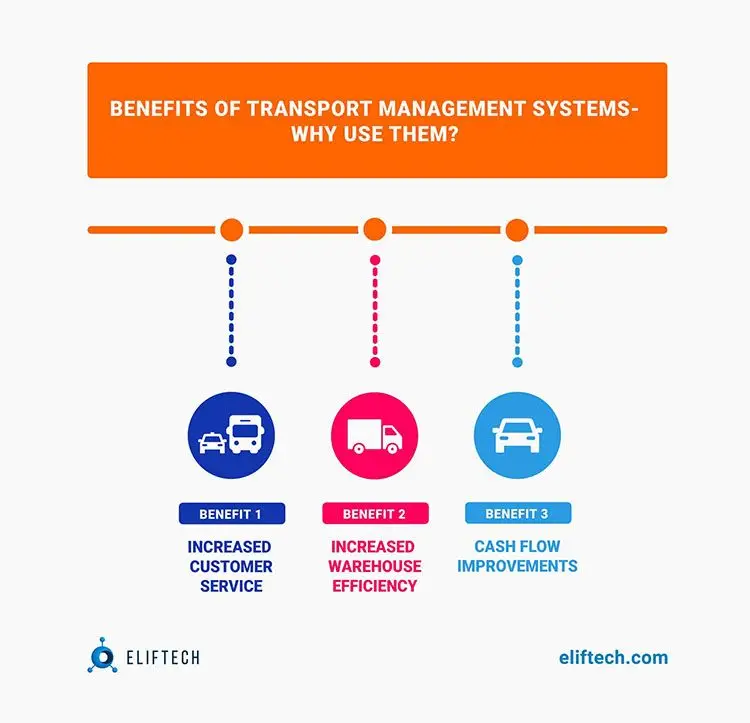
Advantages of Transportation Management Systems
The system is suitable for many companies whose activities include road transport management. Such companies include logistics companies, carriers that provide only transport services, transportation enterprises, 3PL operators that solve complex transportation logistics processes problems, transportation companies that deal with inventory management issues with distributors, and all those who use their own or rented fleet of vehicles in their activities.
TMS facilitates logistics companies' daily work in the office, dispatch, or transfer center. Transportation Management System software (TMS system for short) is an up-to-date transportation management software solution that guarantees:
- Better control
- Error minimization
- Cost calculation algorithms
- Work with car park
- Route planning
- Selection of transport
- Mobile applications support
What Type of TMS Software to Choose?
Typically, a TMS may include modules such as a warehouse management system (WMS), an enterprise resource planning system (ERP), a supply chain management system (SCM), and others.
All TMS software can be divided into two categories: installation and cloud. Installation of transportation management solutions requires purchasing (renting) server hardware, a license, and TMS software integration with enterprise workflows.
Cloud solutions (often called SaaS) assume that all work takes place in a company's cloud, making it suitable for use on a monthly subscription basis.
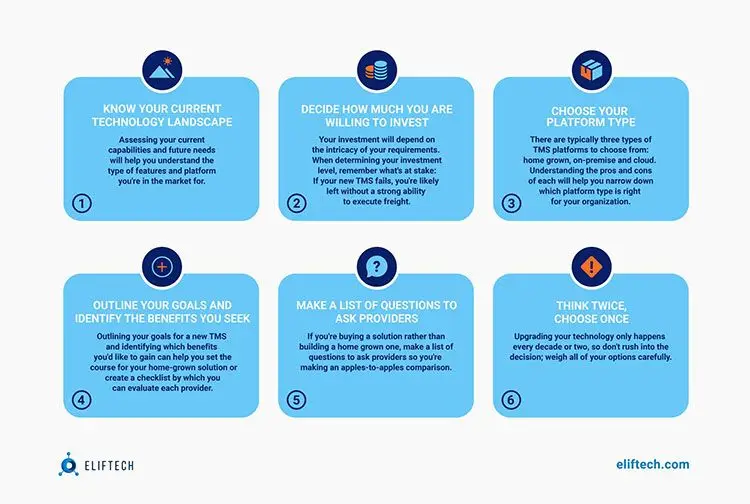
Access is provided remotely, so it can be gained anywhere in the world. The cloud has unlimited storage space based on current business needs and workloads. In addition, any cloud is more reliably protected from technical failures, virus attacks, and attempts to withdraw information by regulatory authorities.
Thanks to cloud storage, the following becomes possible: instantaneous exchange of large amounts of data between geographically distributed offices; integration of cloud storage with numerous services; access to powerful computing resources for processing, structuring, and systematizing large arrays of disparate information.
How to Build TMS Transportation Management Software from Scratch?
As an experienced software development company, we do not offer ready-made universal solutions. Instead, all projects we implement are custom software created specifically for our client's individual needs and business processes. Therefore, each project has several stages to achieve the best effect from implementing the automation system, logistics management software, or TMS software.
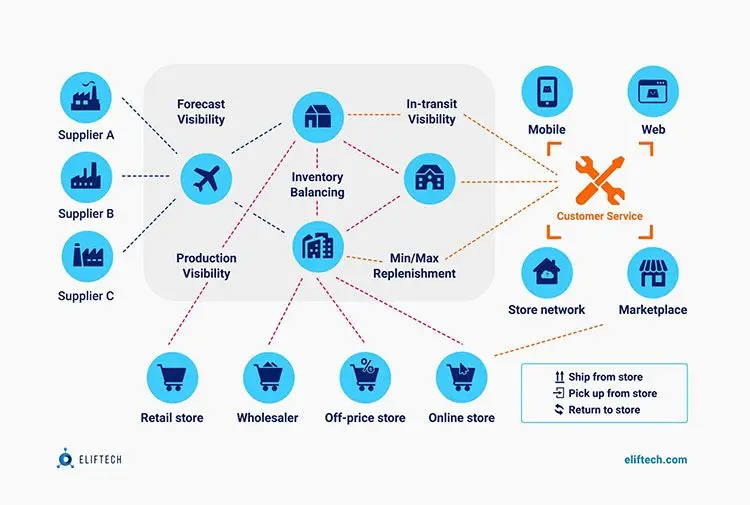
Having studied your business processes, we will use our experience and knowledge to create a document describing what exactly, how, and when we will automate. As a result, you get a document with a detailed description of the result of business process automation for the logistics operations division of the enterprise, with a schedule for the implementation of each stage of the automation project.
Idea validation & planning
The main reason for overspending is poor planning. A transportation management system (TMS) can automate shipping processes and save time and human resources. At the same time, all orders will be taken into account, and it will be easy for dispatchers to handle them thanks to sorting by destination, type of cargo, delivery time, and other parameters.
To develop a TMS for your business, we will:
- Evaluate the project and determine the needs of your business.
- Identify the tasks that need to be solved with the help of the product.
- Find out your requirements and expectations.
- Calculate the required resources — the preliminary estimate of works: time and cost of developing your TMS solution.
- Define requirements and validate functionality.
- Consider the possibilities of the system.
- Verify functionality — a complete picture of the future tool: what tasks it will solve and how.
UI/UX design & development
- Think over the structure of the system.
- Develop a prototype.
- Create a design.
- Full product visualization: you know exactly what to expect, and we know what to develop.
- Transportation management software development: Front-end development (the outer part of the product); Back-end development (the system part of the product). Practically ready functioning tool.
Testing & training
- Prevent and detect defects.
- Fix the defects.
- Ensure the product's quality is superior and the transport management system is completely ready to run.
We can train your staff and assess their readiness to work with the system. We fully understand your employees regarding the system's functioning - this is important for successful implementation.
You get:
- Personnel ready to work with an IT solution, depending on the functions performed in the enterprise.
- Recommendations for the admission of personnel to work with the IT solution, depending on the testing results.
Adaptations and extensions
This stage of software development ensures the operation of the automated TMS unit following all the requirements of the TSV. You get Individual software developments and changes to the current program code, which are necessary to obtain the result described in the TCB for the competent implementation and functioning of transportation management system software.
Integration & launch into commercial operation
We will perform activities to ensure all systems and equipment work in a single information field. As a result, you get a well-established software mechanism for data exchange with external corporate systems and equipment integrated into a common IT solution. Software running in a full-featured industrial mode allows your enterprise to meet all the project plan requirements.
Assistance after completion
We control, help, and support the personnel who work in the system. Physically, our specialist is present on the territory of the automation object and controls the implementation process, particularly the transportation management system. So you get an instant response to any emergency when the system is operated: absolute control, adjustment, and personnel support at any time.
Key Features to Include in a TMS?
When developing custom software systems, your company's needs are considered so that the final product solves the problems of your business. First, however, there is a certain basic set of functionality:
- Contract Management: Easily view contracts, compare costs, track deadlines and agreements in real-time, and be notified when documents need to be renewed or revised.
- Freight Settlement: Audit, make invoice payments, and create new payment vouchers in one place.
- Reporting and analytics: Historical shipping data, distribution patterns, overviews of the logistics industry and transportation industry trends, and available market prices in one place. You can use specialized maps to visualize shipping patterns for better strategizing and developing detailed plans.
- Performance monitoring: Regular customizable reports will allow you to view KPIs such as volume trends, cost per mile/ton, number of deliveries, and canceled and backorders and make necessary improvements to your business anytime.
- Risk management: You can effectively mitigate potential risks with an automated audit process and alert settings.
- Overview of the shipping process: Ability to track shipments (including international shipments) from receipt to delivery, intelligently set up shipment status change notifications, and share delivery information in real time between the carrier, distributor, and customer.
How Much Does It Cost to Develop a TMS?
There are hundreds of technical solutions for TMS software on the market today. In addition, you will be offered many ready-made products for which you will only have to pay for implementation and subscription. So does it make sense to create your system? To answer this question, define your business goals and what you want to achieve with TMS software.
At the same time, it makes sense to focus on the long-term, not only the short-term plans. For example, do you consider expanding or differentiating the business? Each enterprise is unique and characterized by special requirements, trade regulations, internal processes, and culture. The omission of even one essential function will turn into additional expenses of time and money at the implementation stage or even after it. In the worst-case scenario, the TMS you choose may not be right for your business.
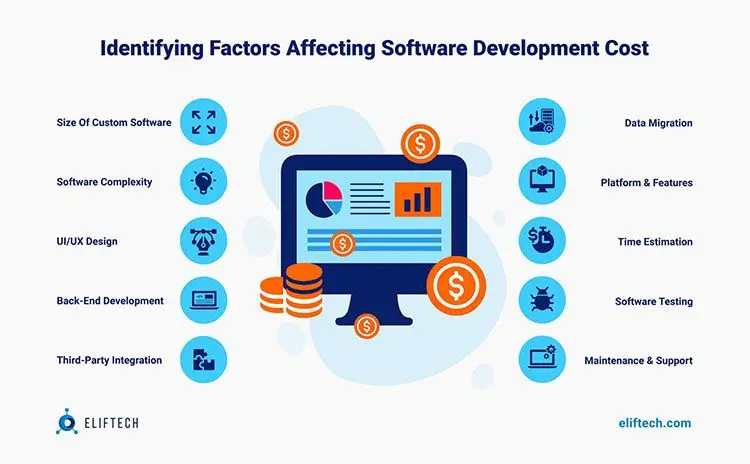
The development cost is calculated based on the project's duration. After discussing your business idea, the project manager calculates how many working hours the project will take. This includes UI/UX design, frontend and backend development, and testing. After that, the cost of the product is calculated.
For modern TMS, the main elements are the administrative panel for administrative tasks, digital assistants, GIS functions, driver-dispatcher communications, and integrated accounting. Based on this minimum functionality, the approximate cost of the entire development cycle is about $200,000. However, you need to understand that the price may vary depending on the functionality required for your business. The next point to consider is the real and hidden costs, such as license, implementation, subscription renewal, technical support, the need to purchase and install third-party software, and staff training.
TMS: Off-the-Shelf or Custom-Built?
TMS is irreplaceable in modern cargo transportation and logistics. Recently, the operating costs of TMS have been significantly reduced, so more companies and logistic service providers are ready to implement automated transportation management systems in their supply chains. Developing a TMS from the ground up allows you to create a product that is exactly what your business needs.
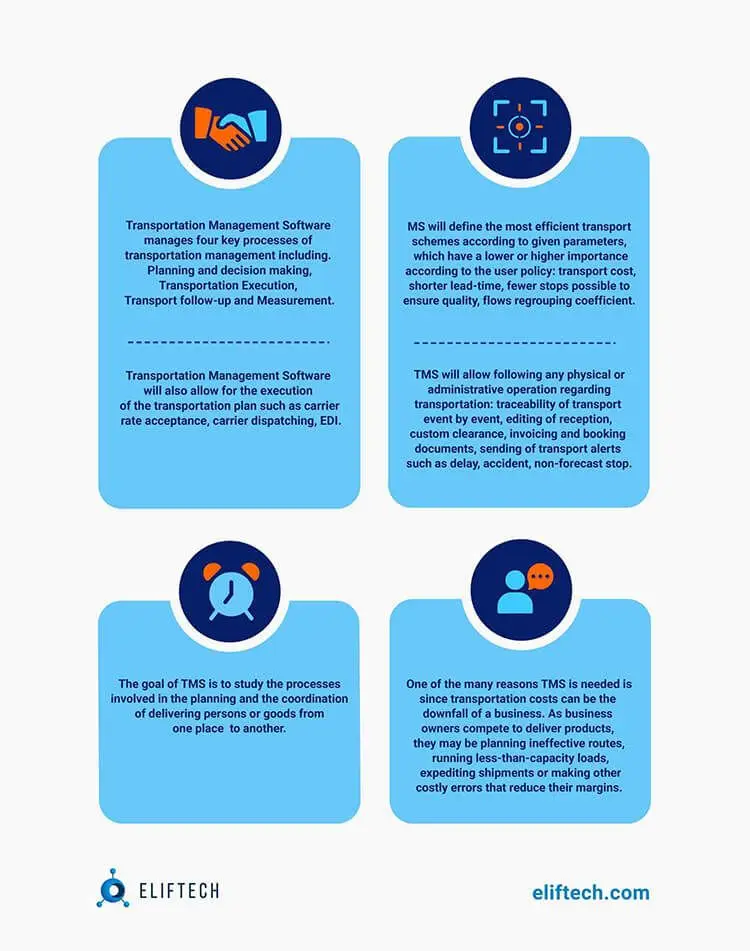
We have solid expertise in developing transport management systems and logistics applications. We welcome you to contact us and discuss your business ideas and options for cooperation!
